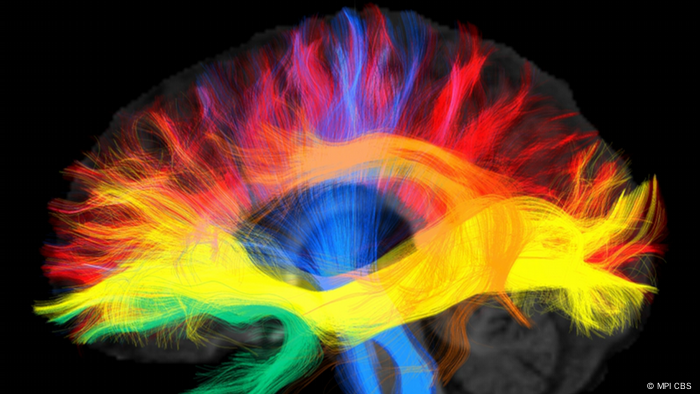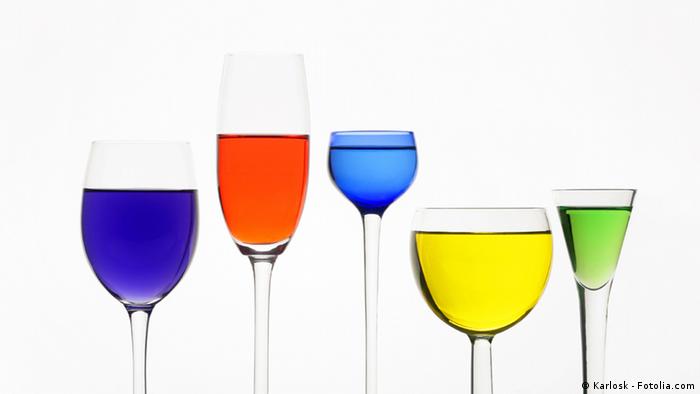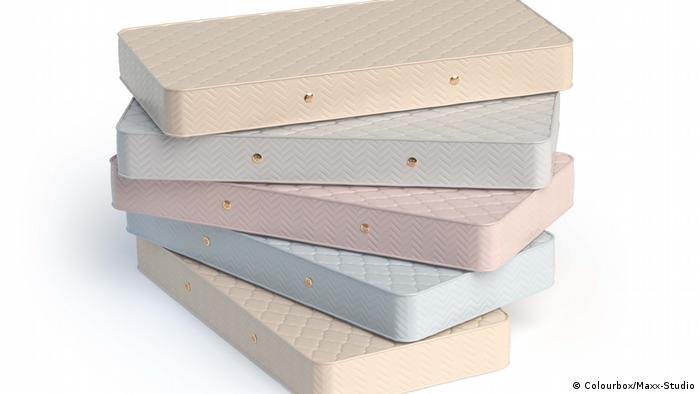Language is created in different regions of our brain. Researchers were able to show that these are linked differently depending on the mother tongue. The knowledge can be used, for example, to help stroke patients.

Made visible: the different language networks in the brain
An Arabic native speaker has to listen carefully during a conversation: does the other person mean kitabun (كتاب) or katib (كاتب)? “Book” or “Writer”? Both words are based on the same language root k-t-b ( ب – ت – ك), which is very common in Arabic.
A native German speaker, on the other hand, has to focus primarily on sentence structure: “Are you going to borrow the book from your favorite writer?” Parts of separable verbs like “to borrow” are often scattered in different places in the sentence in German.
The Arabic and German languages are very different. But can these differences also be recognized in the brains of native speakers? That's what scientists from the Max Planck Institute for Human Cognitive and Brain Sciences in Leipzig wanted to know. The team led by doctoral student and first author Xuehu Wie examined 47 Arabic and German native speakers in a study.
When selecting the subjects, the researchers made sure that they grew up monolingual and only have one mother tongue. In addition to their first language, the subjects only spoke a little English.
Brain scans reveal differences between the native speakers
The team of scientists asked the participants to lie down in a special magnetic resonance imaging (MRI) scanner. This not only produces high-resolution scans of the brain, but also throws out information about the connections between the nerve fibers. Using this data, the researchers were then able to calculate how strongly the individual language regions are interconnected.
“We were very surprised by the result because we always assumed that language is universal,” says Alfred Anwander, a researcher in the Department of Neuropsychology at the Max Planck Institute in Leipzig and co-author of the study. “We thought that it was independent of the language, where it was processed in the brain and also how strong the connections between the different areas were.”
In the case of the Arabic native speakers, the research team was able to see that the left and right hemispheres of the brain are more closely linked. There was also a stronger connection between the lateral lobes of the cerebrum, called the temporal lobes, and towards the middle part, called the parietal lobe.
Language centers for pronunciation and meaning
This is entirely plausible: these brain regions are responsible for processing the pronunciation and meaning of spoken language. A native Arabic speaker has to focus on how the word is pronounced and what it means: did the other person say “kitabun” (book) or “katib” (writer)?
By the In German native speakers, the scientists found stronger connections in the left hemisphere and towards the frontal lobe in the front area of the brain. This can also be explained using the German language, because these regions are responsible for processing the sentence structure of a language. This means that German native speakers can understand nested sentences like the last sentence without any problems.
“Our study provides new insights into how the brain adapts to cognitive requirements – our structural network of language is therefore shaped by the mother tongue,” summarizes co-author Anwander.
Shift Special: Digital Diversity through Languages< /h2>
Valuable knowledge about various language processing
According to the researcher, it is important to emphasize that these different connections mean neither advantages nor disadvantages for the speakers. “The wiring is just different, not better or worse,” says Anwander.
The knowledge of the differently wired language centers, on the other hand, brings advantages for both native speakers. For example, the treatment of stroke patients could be improved. Some sufferers suffer from a speech disorder called aphasia. Different therapeutic approaches could be developed for the different native speakers, with which the patients learn to speak again more quickly.
“It will also be very exciting to expand the study to include more languages,” said Anwander. In another study, the Max Planck researchers examined native speakers of German, English and Chinese. The results are still pending.
It is therefore still unclear whether and how other native languages shape the brain differently. A larger study of German and Arabic native speakers would also be helpful to confirm the results.
New methods for foreign language learning
In the second step of the current study, the researchers will analyze what happens in the brains of Arabic speakers while they are learning German. “We're excited to see how the network changes when learning a new language,” says Anwander.
The findings should ultimately serve to improve methods for learning foreign languages. Depending on the type of learner and mother tongue, different strategies could be developed, for example to learn German more easily. But a lot of research is still needed for this. “We are still far away from the individual learning strategy based on a brain scan, said the researcher. Until then, learners will probably not be able to avoid their vocabulary books .
< br class="clearfix">
 From alcohol to sugar – German Everyday terms derived from Arabic
From alcohol to sugar – German Everyday terms derived from Arabic From alcohol to sugar – German everyday terms that come from the Arabic
From alcohol to sugar – German everyday terms that come from the Arabic From alcohol to sugar – everyday German terms that come from the Arabic stem
From alcohol to sugar – everyday German terms that come from the Arabic stem From alcohol to sugar – everyday German terms that come from the Arabic stem
From alcohol to sugar – everyday German terms that come from the Arabic stem From alcohol to sugar – everyday German terms that come from the Arabic stem
From alcohol to sugar – everyday German terms that come from the Arabic stem From alcohol to sugar – everyday German terms that come from the Arabic stem from
From alcohol to sugar – everyday German terms that come from the Arabic stem from From alcohol to sugar – everyday German terms that come from the
From alcohol to sugar – everyday German terms that come from the